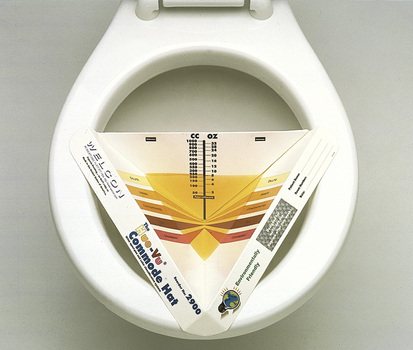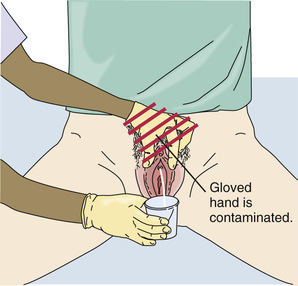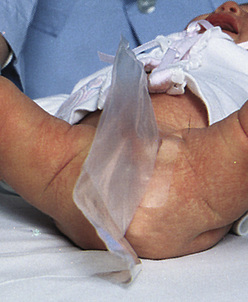Collecting and Testing Specimens
Objectives
• Define the key terms and key abbreviations in this chapter.
• Explain why specimens are collected.
• Explain the rules for collecting specimens.
• Describe the different types of urine specimens.
• Describe the equipment used for blood glucose testing.
• Identify the skin puncture sites.
• Perform the procedures described in this chapter.
• Explain how to promote PRIDE in the person, the family, and yourself.
Key Terms
Key Abbreviations
| BM | Bowel movement |
| ID | Identification |
| I&O | Intake and output |
| mL | Milliliter |
| oz | Ounce |
| SDS | Safety data sheet |
| U/A | Urinalysis |
Specimens (samples) are collected and tested to prevent, detect, and treat disease. Most specimens are tested in the laboratory. All laboratory specimens require requisition slips. The slip has the person’s identifying information and the test ordered. The specimen container is labeled following agency policy. Some tests are done at the bedside. To collect specimens, follow the rules in Box 34-1.
See Teamwork and Time Management: Collecting and Testing Specimens, p. 568.
See Promoting Safety and Comfort: Collecting and Testing Specimens, p. 568.
Urine Specimens
Urine specimens are collected for urine tests. Follow the rules in Box 34-1.
See Delegation Guidelines: Urine Specimens.
See Promoting Safety and Comfort: Urine Specimens.
 The Random Urine Specimen
The Random Urine Specimen
The random urine specimen is used for a routine urinalysis (U/A). No special measures are needed. It is collected any time in a 24-hour period. Many people can collect the specimen themselves. Weak and very ill persons need help.
See procedure: Collecting a Random Urine Specimen.
 The Midstream Specimen
The Midstream Specimen
The midstream specimen is also called a clean-voided specimen or clean-catch specimen. The perineal area is cleaned first to reduce the number of microbes in the urethral area. The person starts to void into a device. Then the person stops the urine stream and a sterile specimen container is positioned. The person voids into the container until the specimen is obtained.
Stopping the urine stream is hard for many people. You may need to position and hold the specimen container in place after the person starts to void (Fig. 34-2).
See Focus on Communication: The Midstream Specimen.
See Promoting Safety and Comfort: The Midstream Specimen.
See procedure: Collecting a Midstream Specimen.
 The 24-Hour Urine Specimen
The 24-Hour Urine Specimen
All urine voided during 24 hours is collected for a 24-hour urine specimen. To prevent the growth of microbes, the urine is chilled on ice or refrigerated. Sometimes a preservative is added to the collection container.
The person voids to start the test with an empty bladder. Discard this voiding. Save all voidings for the next 24 hours. The person and staff must clearly understand the procedure and the test period. This test is re-started if:
See Promoting Safety and Comfort: The 24-Hour Urine Specimen.
See procedure: Collecting a 24-Hour Urine Specimen, p. 572.
 Collecting a Urine Specimen From an Infant or Child
Collecting a Urine Specimen From an Infant or Child
Sometimes urine specimens are needed from infants and children who are not toilet-trained. A collection bag (“wee bag”) is applied over the urethra (Fig. 34-3). A parent or another staff member assists if the child is upset.
Voiding on request is hard for toilet-trained toddlers and young children. Potty chairs and specimen pans are useful. Remember to use terms the child understands. “Pee pee,” “wee wee,” “potty,” and “tinkle” are examples. Or ask the parent what term the child uses and understands.
The nurse may have you give the child water or other fluids when a urine specimen is needed. Usually the child can void about 30 minutes after drinking fluids.
See procedure: Collecting a Urine Specimen From an Infant or Child.






